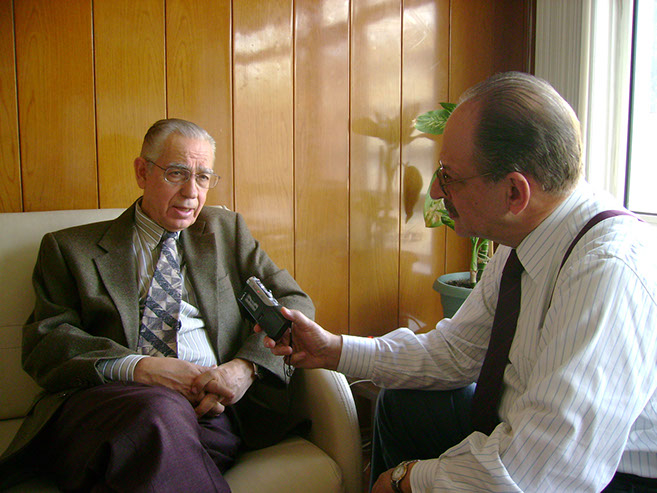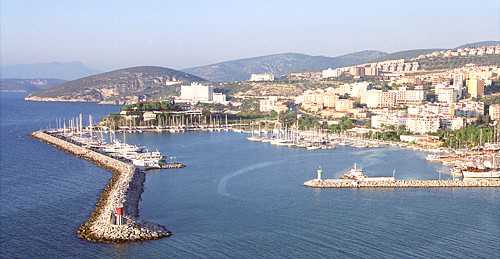By Ferruh Demirmen
Anyone who tries to see or instill a measure of balance or open mindedness in the Western media on the question of Armenian “genocide” will soon discover he/she is out of luck. For the phenomenon, which I call the “Settled History Syndrome,” is not only palpable, but also widespread. It runs deep in the media across Europe and America. It is not new, but deserves special recognition under a name of its own – hence the term coined here. It is the product of year-in, year-out incessant propaganda perpetrated by the Armenian lobby on the so-called “Armenian genocide.”
The syndrome explains how a group of certain historians or scholars, supposedly open minded, gather to discuss Armenian “genocide,” but colleagues who disagree are kept away as misguided renegades.
It explains why anyone who challenges the Armenian version of history is labeled “Genocide denier,” often citing a self-appointed group called ”The International Association of Genocide Scholars“ as the infallible arbiter.
It explains how minds are frozen, debate is stifled, and freedom of opinion is trampled upon – truth being the ultimate casualty.
It explains how money and influence, fed by prejudice, create a cadre of ill-informed politicians and general public. The media, itself thrown into deep freeze, commonly plays the role of the facilitator.
Turks who want to fight unfounded accusations from the Armenian side must first deal with this mindset affecting the media.
Examples are myriad. I will first relay an anecdote, then continue with a recent example, both from America. No doubt, what goes on in America also goes on in Europe, with some mutations.
The PBS Episode
Time is early 2006. PBS, the national Public Broadcasting Service in America, is planning to air on April 17 a supposed TV documentary called “Armenian Genocide.” The film, directed by Andrew Goldberg and bankrolled by more than 30 largely Armenian foundations in America, will surely be an anti-Turkish diatribe based on distorted history. I and a small group of Turks and Turkish Americans contact the PBS headquarters in Alexandria , Virginia, to protest the screening of a one-sided story. (As it turned out, the film shamelessly started with a macabre scene of human skulls taken from a 1871 painting by a Russian artist. For a fuller account, see F. Demirmen, Turkish Daily News, April 24, 2006). We argued that, if PBS decides to go ahead with the screening, it should also show, as a balancing act, “The Armenian Revolt,” a newly released documentary directed by Marty Callaghan.
The PBS headquarters did not change its mind. And the screening of “The Armenian Revolt” was out of consideration.
I then took my case to the affiliate of PBS in Houston Texas, which was also planning to air “Armenian genocide.” Commenting on the film, the channel’s website carried the statement: “The International Association of Genocide Scholars affirms that the number of Armenian deaths at the hands of Ottoman Turks …” It was a reminder to the viewers that the “genocide” was a shut case.
Nonetheless, I thought I should still try to educate the Houston channel, that what they would be airing was a prejudiced and distorted story. To that end, I contacted the programming director and sent him some archival material. After back-and-forth correspondence, I had my fingers crossed. At the end, the channel didn’t change its plans, but the programming director made an admission, which was revealing. He remarked that until I contacted him, they had assumed that “genocide” was a “settled history.”
It was a Lilliputian victory. But it showed what the Turkish side is against: a mindset more or less frozen on its track.
Pasadena Star Episode
Fast forward 9 years. On January 15, 2015, the Pasadena Star in California published a news article titled: “Ground broken on Pasadena Armenian Genocide Memorial.” It was an announcement that the monument would be completed on April 18, ahead of the “100th anniversary of the Armenian Genocide on April 24.” Pasadena happens to be next door to Los Angeles, a hotbed of Diaspora activism.
As the Star put it, the monument would take “the form of a 16-foot-tall tripod … with water drops dripping … to represent each of the 1.5 million lives cut short by the Ottoman Turks in the Armenian Genocide of 1915 to 1923.” The droplets would “fall every 21 seconds, so that 1.5 million drops will fall annually.” The tripod would represent “similarly shaped structures which Armenian leaders were hanged from during the Armenian Genocide.” Surrounding the tripod and stonework would be “12 pomegranate trees, representing each of the 12 lost provinces of Armenia.”
Pictures of Armenian clerics solemnly praying at the ground breaking ceremony and an artist’s rendition of the tripod-shaped monument were included in the news.
The description and symbolism were chilling; but infused in all was a prejudiced and distorted history. Particularly notable in the article was the absolutist tone in the language. “Genocide” was treated as a fact, with no hint as to its disputable character.
Considering their mindset, I hesitated contacting the Star to express my disagreement that Armenian “genocide” is a fact. But the invitation at the end of the article, for readers to engage in “insightful conversations,“ was too good to resist. I also thought that, instead of sending a short blog, I should lay out my arguments in a full article so as to enlighten them. I informed the Star of my intention to submit a dissenting view, and proposed that they publish it as a stand-alone contribution by a guest writer. Their initial reaction was encouraging. They asked me to send in my article.
In the article I took special care to acknowledge Armenian sufferings and losses, but also mentioned sufferings and losses on the Muslim side. I pointed to certain facts, and made corrections to some of the allegations in the article. I also tried to strike a conciliatory note, referring to the calls of Armenian religious leaders in Turkey, and pointed to the poisoning effect such a monument would have on the Armenian-Turkish relations in America. It was an appeal for “peace.” While I did not expect they would agree with my views, my expectations were high that the Star would publish my article – if for no reason than journalistic curiosity and respect for dissenting views.
The response from the Star was an eye opener:
“Yes. We don’t print op-eds by Holocaust deniers, nor articles denying the settled history of the Armenian genocide, recognized now by 23 countries and by the vast majority of scholars and historians not in the pay of the Turkish government.”
So, I was a “Genocide denier,” and Armenian “genocide” was a settled history, the arbiter presumably being the all-knowing International Association of Genocide Scholars. Case shut. Opinions and facts brought forward by others will not change anything.
The response was the embodiment of a frozen mind. Frozen in time, frozen in space. Here was another example of the “Settled History Syndrome.”





